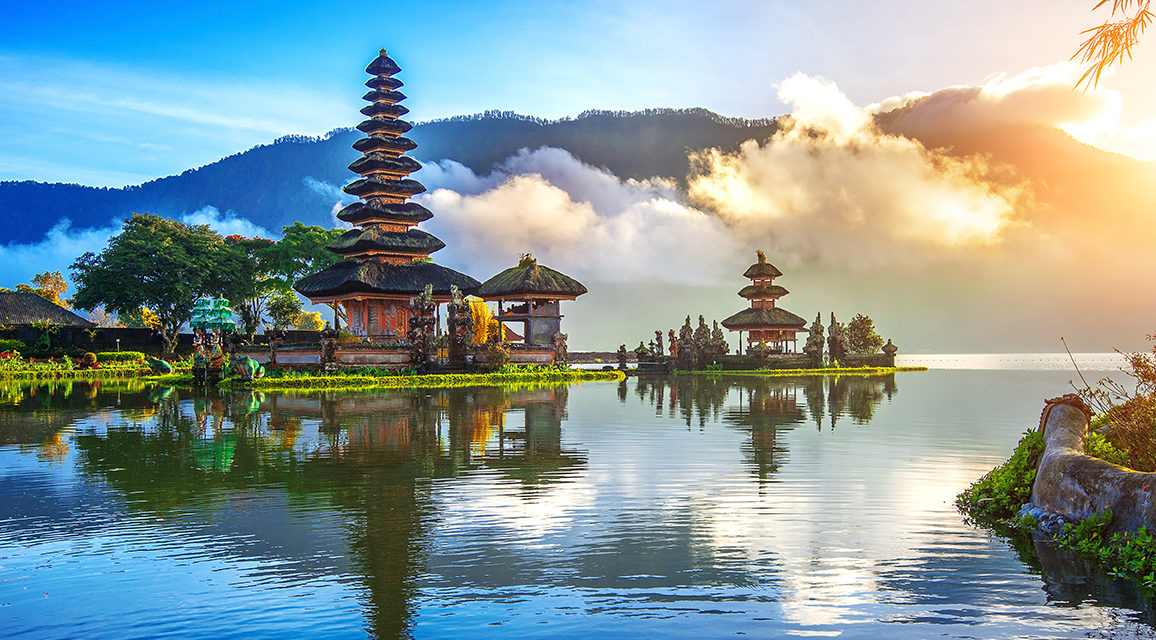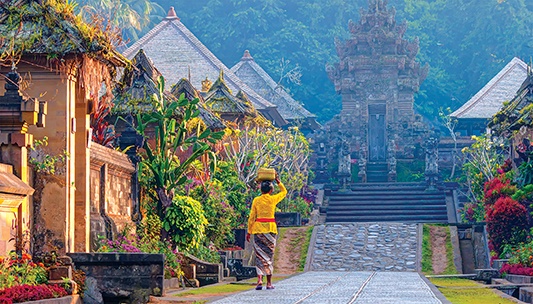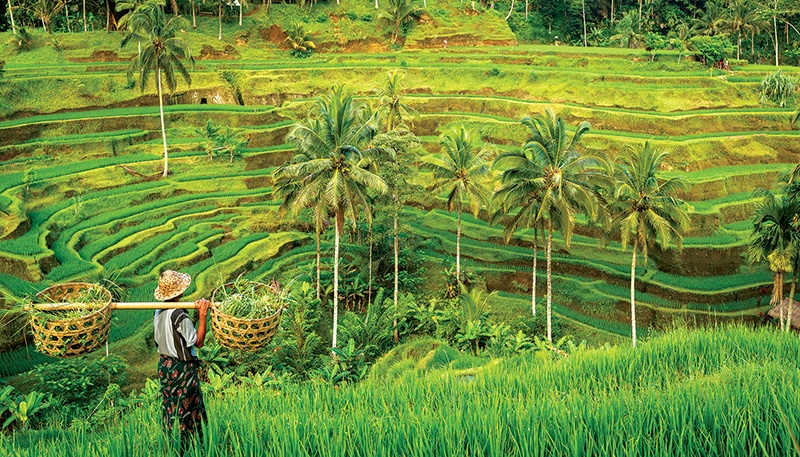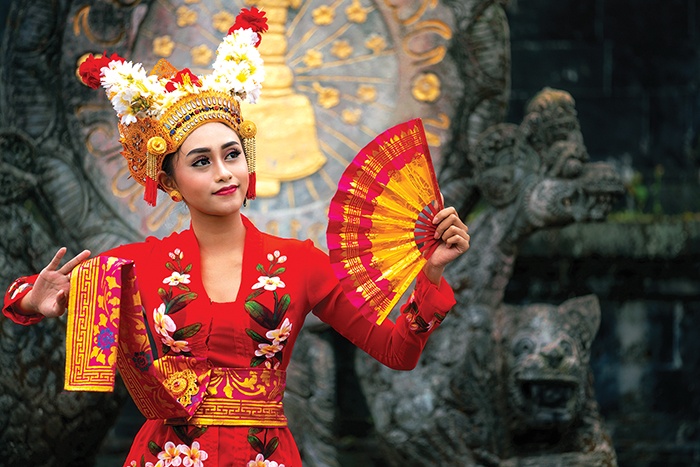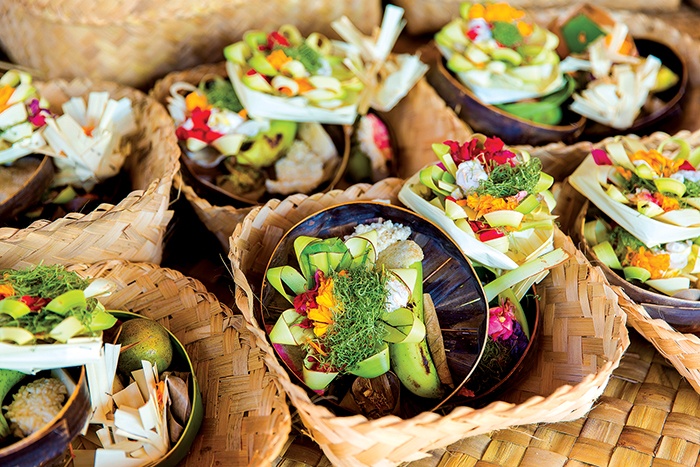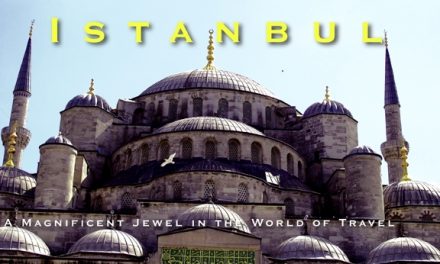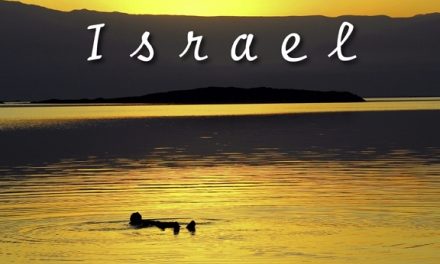Indonesia
The Ultimate Guide to Bali, Island of the Gods
by Olivia Liveng
Some nicknames resonate more aptly than others. Bali, an Indonesian island located in the Java Sea, flawlessly lives up to its nickname: “Island of the Gods.” Sculpted by thick jungle forests that juxtapose seaside cliffs, brimming with enchanting temples that cradle the past’s stories, and saturated with sunlight warming buzzing beaches, it’s no wonder Bali has topped destination wish lists since its tourism boom in the 1960s. Let’s dive into Bali’s varied offerings and areas:
Uluwatu: The Uluwatu region of Bali physically juts out from the mainland and is brimming with jaw-dropping nature, most notably its jarring cliffs rising perpendicular out of the crystal-clear sea. But it is more than just its geography that is so unique: Uluwatu is home to one of the most potent cultural landmarks of the island, the Uluwatu Temple. Perched atop a cliff 70 meters above the sprawling Indian Ocean, this Balinese Hindu sea temple is renowned for its location and famous for its nightly Kecak dance performances, a Balinese Hindu dance, and music drama telling stories of the past. If you’re feeling active during the day, consider renting a surfboard and hanging ten–after all, some of the best swells are found on Uluwatu’s premier beaches!
To Stay: For a splurge, rent out one of Uluwatu Surf Villas’s ten fully serviced cliff-front villas, which allow guests to enjoy unmatched views of the landscape while maintaining privacy and distancing.
Nusa Dua: Nusa Dua is the ultimate retreat in southern Bali if you’re craving luxury service, resort amenities, and blissful white-sand beaches. Envisioned and constructed in the 1970s, today, it is famous as an enclave of Bali’s five-star, internationally renowned resorts, spread out over 350 hectares of land. The intricately carved Pura Geger stone temple sits on a forested bluff overlooking the ocean.
To Stay: The Mulia Resort, with 526 rooms and three expansive infinity pools, epitomizes luxury, sitting with grandeur on a private beach. Most famous, perhaps, are the
Mulia’s Sunday brunches, which provide an opportunity for locals and tourists to mingle over a feast of international delicacies facing the Indian Ocean.
Northwest Bali: If crowds, motorcycles revving, and packed beaches don’t resonate with you, escaping to Northwest Bali is the ultimate solace. Nature reigns in this virtually untouched corner of the island, across the sea from Java and its breathtaking volcanoes. Snorkelers and scuba divers enjoy exploring the diversity of underwater life in the relatively calm water. There are currently projects underway to help restore the degraded reefs of the region and increase biodiversity. And while the region’s hilly landscape is essential to the area’s local culture, the varied topography is also optimal for day-long hikes.
To Stay: Experience the ultimate retreat at Sumberkima Hill, nestled in the region’s vast foothills. Each uniquely designed villa provides a bird’s-eye view of the landscape. The management prides itself on sustainably integrating with the local community by creating jobs and planting permaculture gardens. Or, if you’re seeking bliss momentarily, check into Mimpi Resort Menjangan, known for its rejuvenating natural hot springs. If you’re feeling like indulging, book a villa that includes its own private hot spring tub–this is the only resort in Bali to have this amenity.
East Bali: Locals will tell you that East Bali–specifically the Sideman Valley–reminds them of the Bali they remember twenty years ago. It’s true. An hour east of Ubud, Sideman Valley is defined by verdant rice fields, panoramic rolling hills, tropical forests, and authentic temples that transport travelers back in time. Focal to the landscape is the towering Mount Agung, an active volcano that pieces the skyline. From the trekking between rice fields to various villages, rafting on its snaking rivers, and motorbiking to the pristine Virgin Beach, East Bali is optimal for adventure-seekers. One is never lacking an adrenaline-rushing adventure here.
To Stay: One of the most beloved resorts in the valley, Samanvaya Luxury Resort and Spa is an adults-only paradise nestled between Sideman’s rolling hills. Each private bungalow offers excellent views of the surrounding landscape, and the property’s infinity pools are Instagram-worthy.
Middle Bali: Unfortunately, many tourists and ex-pats tend to gravitate towards Bali’s cities, especially Canggu and Kuta. However, to experience life like a local and soak in Bali’s authentic culture and stunning natures, the rural villages in Bali’s core are where to head. Whether hoping to hike, trek through rice fields, try the Indonesian favorite nasi Goreng (fried rice) at a locally owned warung (local shop), or simply unwind and relax, the middle of Bali is the island’s authentic haven.
To Stay: For the ultimate reboot, escaping to Fivelements for a retreat program is necessary. A healing sanctuary for regeneration, replenishment,, and alignment, Fivelements Retreat embraces holistic Balinese-inspired therapies administered by specialists to make guests start feeling whole again.
Ubud: Ubud, the spiritual heart of Bali, is a verdant jungle paradise where nature and culture seamlessly intertwine. The arteries, the surrounding rivers, sliver, and snake around Uber’s outer jungle landscape before converging in the town’s center. From its grand temples dusted in gold, to its museums that display art dating back thousands of years, to its world-class restaurants serving top-quality Indonesian and international cuisine, it’s no wonder Ubud has been a traveler’s mecca for the past 50 years. Ubud, considered the world’s yoga capital, is the prime place to practice your downward dogs and even begin meditation practices.
To Stay: The newly opened K Club provides a lucious escape. Deep in the jungles of Ubud, this villa-only resort enchants travelers with stunning views of rice fields and private plunge pools.
www.indonesia.travel

